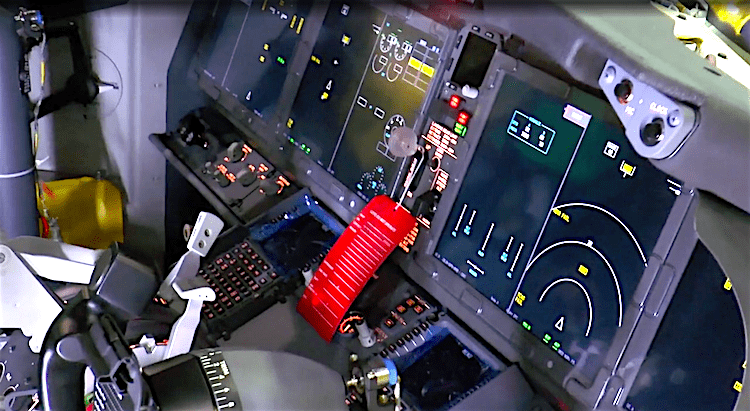
Boeing 737 MAX cockpit. Photo, courtesy of Boeing.
Investigators released a preliminary report into the crash of Ethiopian Airlines Flight 302, finding that the pilots were unable to regain control of the Boeing 737 MAX 8 aircraft despite following Boeing’s safety procedures after the plane’s automated flight control systems repeatedly activated due to a faulty sensor.
Speaking before the release of the report, Ethiopian Minister of Transport Dagmawit Moges said the plane experienced “repetitive un-commanded aircraft nose-down conditions,” recommending Boeing and aviation regulators review the plane’s anti-stall software, maneuvering characteristic augmentation system, or MCAS, without referring to it by name.
“Shortly after liftoff, the value of the left angle of attack sensor deviated from the right one and reached 74.5 degrees while the right angle of attack sensor value was 15.3 degrees,” the preliminary report states. The flight data recorder registered “an automatic aircraft nose down [AND] trim command four times without pilot’s input.”

ET302 crash preliminary FDR data, taken from Bureau d’enqueues et d’ Analyses preliminary crash report.
The report showed significant similarities to the Lion Air Boeing 737 MAX 8 crash on Oct. 29, just months before. A full investigative report likely won’t be released for about a year.
“We at Boeing are sorry for the lives lost in the recent 737 MAX accidents,” Boeing CEO Dennis Muilenburg said in a prepared statement. “These tragedies continue to weigh heavily on our hearts and minds, and we extend our sympathies to the loved ones of the passengers and crew on board Lion Air Flight 610 and Ethiopian Airlines Flight 302.”
“The history of our industry shows most accidents are caused by a chain of events,” he continued. “This again is the case here, and we know we can break one of those chain links in these two accidents. As pilots have told us, erroneous activation of the MCAS function can add to what is already a high workload environment. It’s our responsibility to eliminate this risk. We own it and we know how to do it.”
“We’re taking a comprehensive, disciplined approach, and taking the time, to get the software update right,” said Muilenburg. The FAA is currently reviewing Boeing’s software update for the MCAS system.